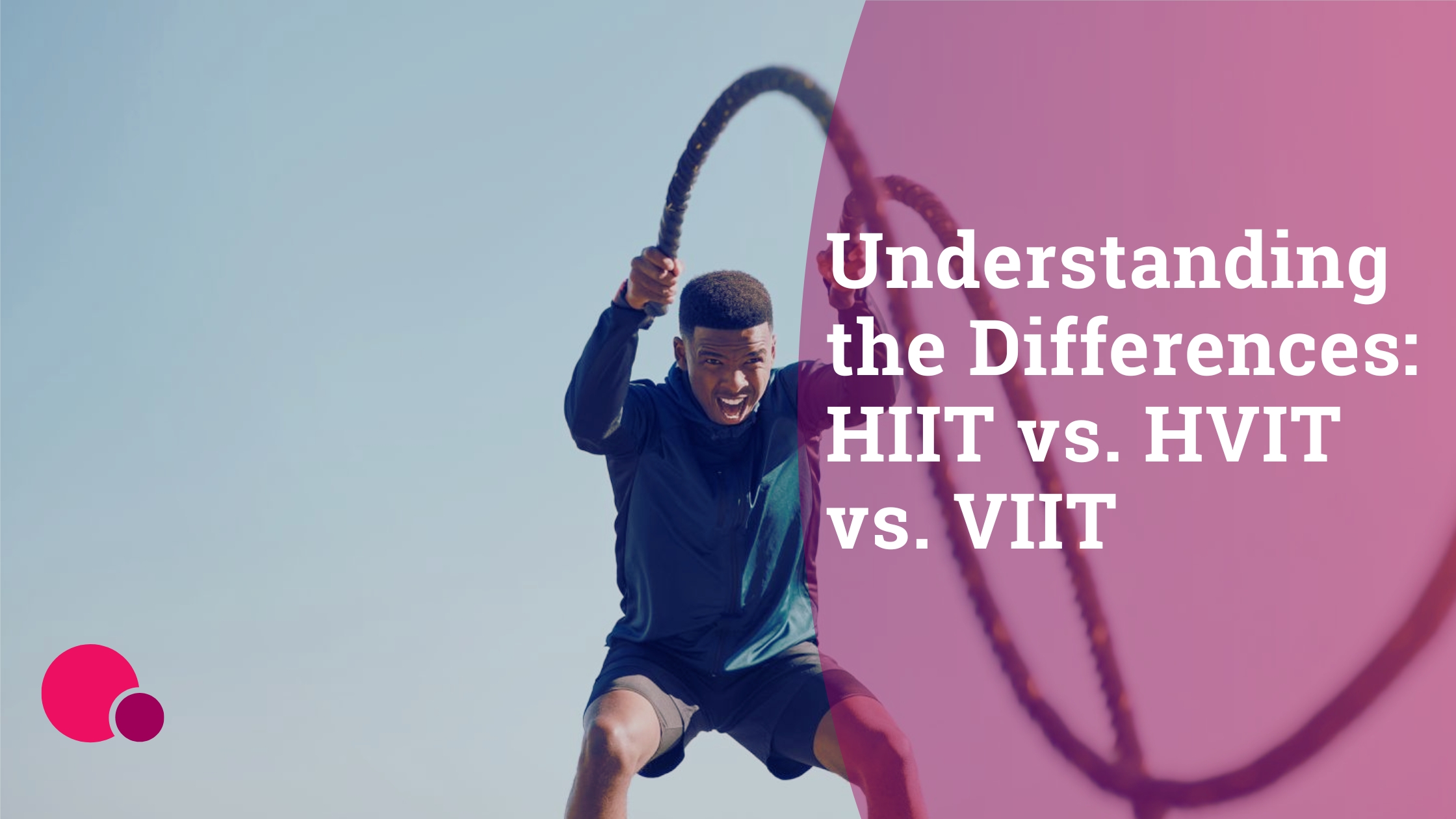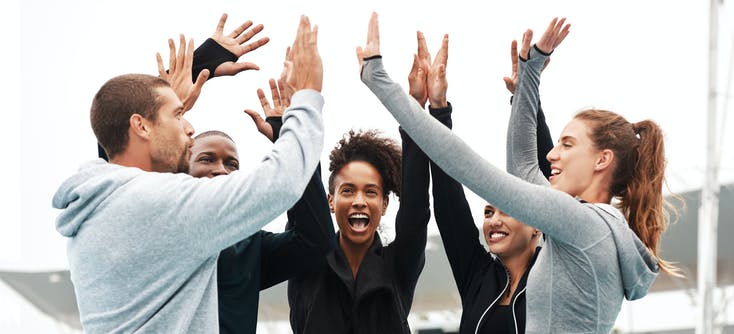Excess post-exercise oxygen consumption, or EPOC, is a key concept in fitness that describes the increased rate of oxygen intake following strenuous activity.
In simpler terms, it's the body's way of replenishing what was lost during a vigorous workout, leading to continued calorie burn even after the exercise is over.
This process is crucial for trainers and fitness enthusiasts to understand, as it significantly impacts how the body responds to exercise.
For personal trainers, knowing about EPOC is essential.
It allows them to tailor workouts that don't just burn calories during the exercise but also keep the calorie burn going long after. This means more effective workouts for clients, helping them reach their fitness goals faster.
This article will dive into the science behind EPOC, its benefits, and practical ways to incorporate it into training sessions.
Key takeaways
-
EPOC, or excess post-exercise oxygen consumption, is the body's way of replenishing oxygen lost during intense workouts, leading to continued calorie burn post-exercise.
-
EPOC can last up to 48 hours, influenced mainly by exercise intensity.
-
High-intensity exercises like HIIT stimulate EPOC, enhancing calorie burn.
-
Factors affecting EPOC include exercise type and individual characteristics.
-
EPOC aids in weight loss and muscle recovery but should be part of a balanced fitness plan.
What is EPOC?
EPOC, or excess post-exercise oxygen consumption, refers to the increased rate of oxygen intake and metabolism following a workout as the body recovers, repairs, and returns to its pre-exercise state.
This effect can persist for up to 48 hours post-exercise, but, on average, it usually lasts 12 to 24 hours.
EPOC is primarily influenced by exercise intensity, not duration. When higher intensities demand energy (ATP) that can't be supplied aerobically, anaerobic pathways step in.
Following an intense session, such as High-Intensity Interval Training (HIIT), the body uses EPOC to restore muscle glycogen, rebuild proteins, and replenish ATP, thus enhancing calorie burn.
For example, a personal trainer working with a client on a HIIT routine might notice an increased calorie burn in their client even hours after the session. This is EPOC at work.
The aerobic system kicks in post-workout to replace ATP consumed during the exercise, leveraging the EPOC effect.
Body's oxygen debt post-exercise
After a challenging workout, your body needs more oxygen than usual to return to normal.
This increased need for oxygen, known as "oxygen debt," is the body's way of catching up after the high energy demands of intense exercise. This process is what we call EPOC.
For example, imagine you've just finished a series of sprints. Your body has worked hard and used up a lot of oxygen.
Now, even after you've stopped exercising, your body continues to use more oxygen than it would if you were just sitting still.
This extra oxygen helps your body recover from the workout.
Biological processes involved in EPOC
During EPOC, your body is busy with several tasks to help you recover. It's replacing ATP, the energy source used during your workout, and converting lactate (a byproduct of intense exercise) into energy.
It's also replenishing oxygen in your blood and muscles, repairing muscle damage, and bringing your body temperature back to normal.
Simply put, after you push your body in a workout, it continues to work hard even when you stop.
This includes turning waste products into useful energy, repairing muscles, and balancing oxygen levels.
This whole process uses extra energy (calories), which is part of the reason why you continue to burn calories after your workout.
By understanding EPOC, trainers can create workouts that challenge you during the session and maximize the afterburn effect afterward, leading to better results from your training.
What factors influence EPOC?
In understanding excess post-exercise oxygen consumption (EPOC), it's important to recognize that several factors can influence its magnitude, including the intensity and duration of exercise, the type of exercise performed, and individual physiological differences.
Intensity and duration of exercise
The intensity and duration of your workout significantly impact EPOC levels. Generally, the higher the intensity, the higher the EPOC.
For example, a case study published in the International Journal of Exercise Science demonstrated that participants who engaged in high-intensity interval training experienced a notably higher EPOC than those who performed steady-state cardio at a moderate intensity.
However, duration also matters. Longer workouts can lead to higher EPOC, but this is closely tied to the intensity of the workout.
A 45-minute, high-intensity workout might generate a higher EPOC than a two-hour walk.
The body's metabolic demands change during the workout, with the highest rates typically occurring during moments of peak effort.
Type of exercise
The kind of exercise you do also influences EPOC. Aerobic exercises, often lower in intensity and longer in duration, generally produce less EPOC than anaerobic exercises.
This difference is due to the type of fuel used. Aerobic exercises primarily burn fat, which requires less oxygen for metabolism.
In contrast, anaerobic exercises, typically more intense, use more carbohydrates and proteins, leading to a higher demand for oxygen and, thus, a higher EPOC.
Individual factors
Individual characteristics like age, fitness level, and metabolism significantly impact EPOC levels.
Older individuals and those with higher fitness levels may have lower EPOC due to more efficient metabolic responses to exercise.
People with faster metabolisms tend to have higher EPOC levels, as their bodies naturally burn more calories. However, these factors can vary widely, even within the same age and fitness groups.
EPOC and weight loss
EPOC is a significant factor in weight loss and fat burning, primarily due to its role in increasing calorie expenditure post-exercise.
The role of EPOC in fat burning
EPOC plays a crucial role in fat-burning post-exercise. When you engage in high-intensity workouts, your body uses more oxygen, accumulating lactic acid.
After the workout, the body breaks down this lactic acid and converts it into energy, contributing to calorie burn.
However, it's important to note that EPOC is just one part of the overall energy expenditure equation.
True weight loss comes from creating a caloric deficit through a combination of diet and exercise.
Integrating EPOC-focused exercises in weight loss programs
Incorporating EPOC-focused exercises into weight loss programs can significantly boost calorie burn.
Workouts like HIIT and CrossFit stress the body considerably and lead to a higher EPOC.
These workouts are typically shorter but very intense, helping to burn calories during the workout and afterward.
For optimal EPOC, we recommend full-body exercises that engage all major muscle groups.
Hydration, quality sleep, and proper nutrition are crucial in enhancing the EPOC effect and ensuring effective recovery post-workout.
EPOC for muscle building and recovery
EPOC plays a significant role in muscle building and recovery as the body engages in various therapeutic processes critical for muscle growth and repair post-exercise. The increased oxygen consumption during EPOC aids in these processes.
It helps clear lactic acid, often associated with muscle soreness and supports the synthesis of new muscle proteins.
EPOC's impact on muscle recovery
EPOC, or excess post-exercise oxygen consumption, is essential for muscle recovery because, as explained before, after a workout (high-intensity or resistance training, in particular), your body works hard to return to normal.
It balances hormone levels, refuels the muscles, and fixes muscle damage. This recovery is crucial for building stronger muscles.
To simplify things, think of EPOC as your body's repair mode.
After a challenging workout, it uses extra oxygen to clear out waste like lactic acid, which you might know as the culprit for muscle soreness.
This process not only helps with muscle repair but also builds them stronger for your next workout.
Designing EPOC-optimized workouts for muscle building
High-intensity exercises are key when planning workouts to maximize EPOC for muscle growth.
This includes workouts like High-Intensity Interval Training (HIIT) or lifting heavy weights.
These intense workouts push your body to use more energy even after exercising, aiding muscle growth.
For example, in a HIIT session with short, intense bursts followed by rest, your body continues to burn calories at a higher rate after the workout.
Similarly, lifting heavy weights for fewer reps can boost EPOC, helping with muscle growth.
Remember to give your body enough rest, like a day or two, between these intense workouts to prevent overtraining.
Implementing EPOC in training programs
Incorporating EPOC into training programs involves designing HIIT routines that stimulate the EPOC response while assessing client suitability.
Fitness professionals should balance high-intensity workouts with adequate recovery periods to allow the body time to replenish and repair itself to benefit from the EPOC effect.
Assessing client suitability
Before starting EPOC-focused training, it is important to check if it's right for your client.
This means looking at their fitness level, health, and goals. High-intensity workouts that boost EPOC might not be suitable for everyone, especially those with certain health issues.
Also, commitment is key.
If clients are inconsistent with their workouts and nutrition, they might not see the benefits of EPOC-focused training.
It's like building a house; you need a solid foundation of regular exercise and good eating habits.
Creating EPOC-based training plans
To create training plans that make the most of EPOC, focus on high intensity and duration. Here's a simple guide:
-
Choose a fun exercise: Whether cycling, running, or jump rope, pick something enjoyable.
-
Start with a warm-up: This could be something like stretching or light jogging for 15–20 minutes.
-
Go for high-intensity intervals: For example, cycle hard for 30 seconds, then slow down for a few minutes. Repeat this cycle.
-
Try Tabata-style weight lifting: This involves doing exercises like push-ups or squats in short, intense bursts.
-
Consider circuit training: Keep the intensity high with little rest between exercises.
Monitoring progress is crucial. Use tools like heart rate monitors to track energy use and adjust based on your client's feedback.
If they're feeling too tired or not seeing results, tweak the intensity or duration of their workouts.
Advanced insights into EPOC
Diving deeper into EPOC reveals its complex interaction with various physiological processes, with advanced insights including stage training, heart rate monitoring, and practical implications of EPOC-focused training in workout regimes.
Stage training in EPOC optimization
Stage or periodization is a strategic approach to structuring training to maximize performance, particularly influencing EPOC.
This method involves varying workout phases to stimulate physical and metabolic adaptations.
Originating from the works of Leo Matveyev and Vladimir Platonov, this approach is exemplified by the NASM OPT model, which progresses through stabilization, strength endurance, muscular development, and power stages.
Each stage targets different training volumes and intensities, gradually preparing the body for higher workloads and optimizing EPOC.
For instance, a real-world application of this model can be seen in a 12-week training program for runners, where varying intensities and workout types led to improved running efficiency and higher EPOC, as observed in a study.
Seven key aspects of EPOC
Understanding EPOC involves considering multiple factors:
-
Exercise intensity: More intense workouts yield higher EPOC.
-
Exercise duration: Longer sessions can result in greater EPOC.
-
Exercise frequency: More frequent workouts can lead to higher EPOC.
-
Type of exercise: Anaerobic exercises typically induce more EPOC than aerobic exercises.
-
Age and fitness level: Younger and less fit individuals might experience more EPOC.
-
Individual metabolism: Faster metabolism correlates with higher EPOC.
-
Recovery time: Proper rest is crucial for maximizing EPOC benefits.
Heart rate monitoring in EPOC
Heart rate monitoring is a practical tool for optimizing EPOC. By tracking heart rate fluctuations during and after workouts, you can gauge how different training intensities affect EPOC.
For instance, a consistent heart rate throughout a workout indicates a steady-state effort conducive to EPOC optimization.
A study involving cyclists used heart rate monitors to tailor their training for EPOC optimization, resulting in improved endurance and higher post-workout calorie burn.
EPOC and muscle energy sources
The body primarily uses carbohydrates during high-intensity exercise, switching to fat metabolism as intensity increases.
This metabolic shift triggers EPOC as the body continues breaking down fat for energy post-exercise.
Understanding the blend and overlap of the body's energy systems is vital for effective EPOC utilization.
Practical implications of interval training and EPOC
Interval training, especially HIIT, is highly effective in inducing EPOC.
Research indicates that HIIT can lead to 25–30% more calories burned than other forms of exercise, making it an integral part of fitness programs for those aiming for weight loss or muscle gain.
HIIT has been shown to improve cardiometabolic health, particularly in individuals with or at risk of type 2 diabetes.
Myths and misconceptions about EPOC
Despite its growing popularity, there are several myths and misconceptions about EPOC, with one common misconception being that EPOC alone can lead to significant weight loss.
Here's the breakdown of some of the most prevalent misunderstandings.
Common misconceptions
In fitness circles, there are misconceptions about EPOC, the excess post-exercise oxygen consumption, with a common belief that interval training results in a significantly larger EPOC effect than steady-state cardio.
However, research indicates that the EPOC difference between these two types of exercises is relatively minor.
For instance, a study found that interval training may have a higher EPOC, but the difference is not substantial enough to impact weight loss greatly.
Another misconception is that EPOC affects everyone equally. Research, however, shows that factors like age, fitness level, and metabolism significantly influence EPOC.
Older individuals or those with higher fitness levels may have a reduced EPOC effect due to a more efficient metabolic response to exercise.
Clarifying the realities
The reality is that EPOC occurs after all exercise types, regardless of intensity or duration.
Your body will experience an increase in oxygen uptake after exercise, leading to an EPOC effect.
Research has shown that EPOC, while contributing to calorie burn, plays a minor role compared to the energy expended during exercise.
For example, a study involving 20 rounds of 1-minute running intervals at 105% of VO2max, with 2 minutes of rest, burned 537 calories during the exercise and an additional 64 calories post-exercise over 9 hours.
In practical terms, these insights into EPOC can help fitness professionals tailor their programs more effectively.
Understanding that EPOC plays a part but not the sole role in weight loss can lead to more balanced training approaches.
A well-rounded fitness plan should include exercise, a balanced diet, and adequate sleep for optimal health and fitness gains.
Frequently asked questions on EPOC
What is EPOC and why is it important in fitness training?
EPOC, or excess post-exercise oxygen consumption, refers to the increased rate of oxygen intake following strenuous activity. It's significant as it helps burn more calories even after the workout.
How can trainers maximize the EPOC effect in their clients' workouts?
Trainers can maximize EPOC by incorporating high-intensity interval training (HIIT) and ensuring varied and challenging workouts.
Does EPOC contribute to weight loss?
Yes, EPOC can aid in weight loss by increasing caloric burn post-exercise, though it should be part of a comprehensive fitness plan.
Is EPOC effective for muscle building?
EPOC primarily aids in fat burning but can indirectly support muscle building by improving overall fitness and helping recovery.
How long does the EPOC effect last after a workout?
The duration of the EPOC effect varies but can last from a few hours to up to 48 hours after an intense workout.










